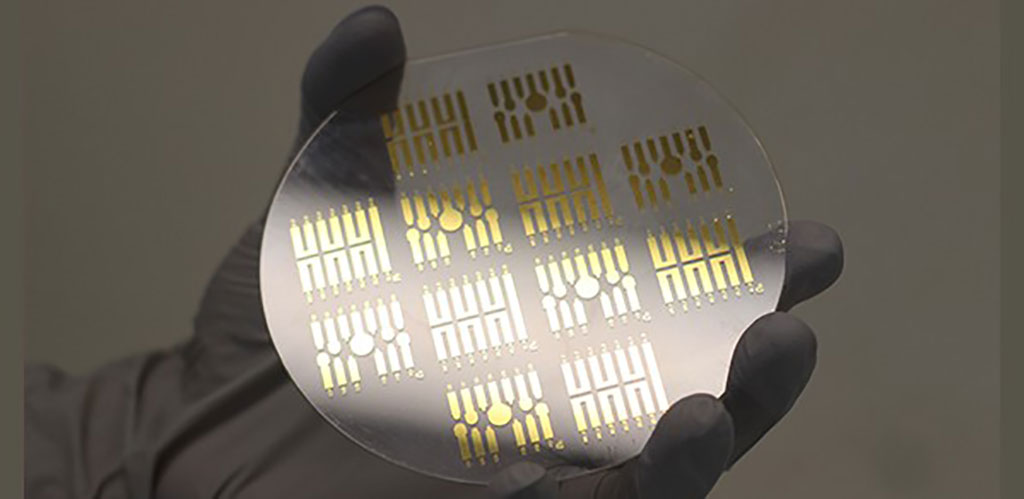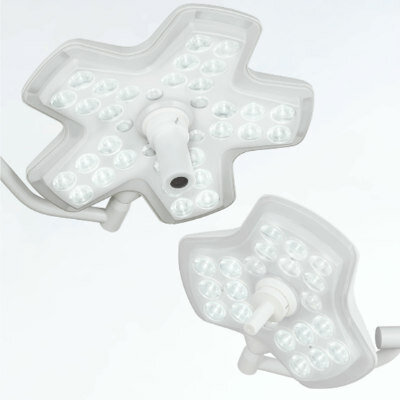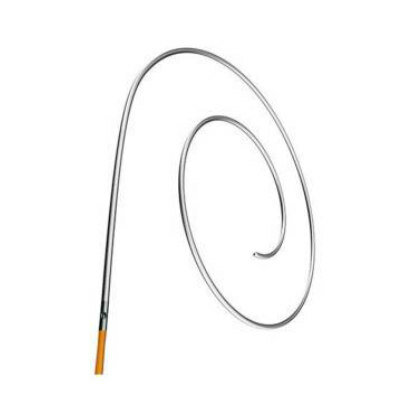Miniaturized Biosensors Open New Possibilities for Minimally Invasive Implants
|
By HospiMedica International staff writers Posted on 23 Nov 2022 |

Diagnosing and monitoring diseases often rely on the detection of molecules called “biomarkers”. However, the detection of such biomarkers need periodic blood draws, which are expensive, time consuming, require specialized equipment, and provide no continuous data. To avoid this, and provide real-time biomarker detection, a team of researchers has pioneered the development of implantable aptamer-based sensors. These devices are electrochemical sensors based on DNA and they successfully track small molecules in real time. The new method for the miniaturization of biosensors will enable new possibilities for minimally invasive implants. The miniaturized transistors are fabricated on thin, flexible substrates, and amplify biosignals, producing currents more than 200 times larger than analogous alternatives.
A key step to translate these sensors to real-life applications in the clinic is to make them as small and minimally invasive as possible. To solve this miniaturization challenge, researchers at University of Cambridge (Cambridge, UK) teamed up with the Plaxco Lab at the University of California Santa Barbara (Santa Barbara, CA, USA) to discover a way to combine aptamer-based sensors with an amplifying transistor platform. Together, they developed biosensors based on organic electrochemical transistors (OECTs), which maintain high performances of the aptamer sensors even when shrunk to quite small dimensions.
Previous aptamer sensors were made of thin, millimeters-long wires. In contrast, the new transistor biosensors are so small that they are barely visible to the naked eye. This technology will be useful for medical applications that require sensors in delicate areas. For example, such a minimally invasive sensor could enable implantation in the brain – an ideal region to track biomarkers linked with mental disorders, such as depression. The cross-disciplinary research team will now explore possible next directions of this work. For example, another benefit of signal amplification is improved lifetime, so the sensor can operate for longer without being replaced. Each of these improvements is one step closer to deployment in humans for tracking anything from drugs to hormones to neurotransmitters.
“This work is an important step towards creating better tools for healthcare providers. With this type of sensor, physicians will be able to gain unprecedented real-time data for tracking their patients’ health,” said Sophia Bidinger, research student and lead author of the paper.
“The most exciting aspect of this work is that it could be used to detect virtually any small molecule. This will help doctors gain much more patient specific insight than ever before,” added paper co-author Professor George Malliaras.
“There is a huge market opportunity for continuous molecular monitoring. Besides glucose, there are not very many commercially available sensors. More tools for supporting continuous, in vivo sensing will save lives,” stated paper co-author Professor Tawfique Hasan.
Related Links:
University of Cambridge
University of California Santa Barbara
Latest Surgical Techniques News
- Robotic Assistant Delivers Ultra-Precision Injections with Rapid Setup Times
- Minimally Invasive Endoscopic Surgery Improves Severe Stroke Outcomes
- Novel Glue Prevents Complications After Breast Cancer Surgery
- Breakthrough Brain Implant Enables Safer and More Precise Drug Delivery
- Bioadhesive Sponge Stops Uncontrolled Internal Bleeding During Surgery
- Revolutionary Nano Bone Material to Accelerate Surgery and Healing
- Superior Orthopedic Implants Combat Infections and Quicken Healing After Surgery
- Laser-Based Technique Eliminates Pancreatic Tumors While Protecting Healthy Tissue
- Surgical Treatment of Severe Carotid Artery Stenosis Benefits Blood-Brain Barrier
- Revolutionary Reusable Duodenoscope Introduces 68-Minute Sterilization
- World's First Transcatheter Smart Implant Monitors and Treats Congestion in Heart Failure
- Hybrid Endoscope Marks Breakthrough in Surgical Visualization
- Robot-Assisted Bronchoscope Diagnoses Tiniest and Hardest to Reach Lung Tumors
- Diamond-Titanium Device Paves Way for Smart Implants that Warn of Disease Progression
- 3D Printable Bio-Active Glass Could Serve as Bone Replacement Material
- Spider-Inspired Magnetic Soft Robots to Perform Minimally Invasive GI Tract Procedures
Channels
Critical Care
view channel
Light-Based Technology to Measure Brain Blood Flow Could Diagnose Stroke and TBI
Monitoring blood flow in the brain is crucial for diagnosing and treating neurological conditions such as stroke, traumatic brain injury (TBI), and vascular dementia. However, current imaging methods like... Read more
AI Heart Attack Risk Assessment Tool Outperforms Existing Methods
For decades, doctors have relied on standardized scoring systems to assess patients with the most common type of heart attack—non-ST-elevation acute coronary syndrome (NSTE-ACS). The GRACE score, used... Read morePatient Care
view channel
Revolutionary Automatic IV-Line Flushing Device to Enhance Infusion Care
More than 80% of in-hospital patients receive intravenous (IV) therapy. Every dose of IV medicine delivered in a small volume (<250 mL) infusion bag should be followed by subsequent flushing to ensure... Read more
VR Training Tool Combats Contamination of Portable Medical Equipment
Healthcare-associated infections (HAIs) impact one in every 31 patients, cause nearly 100,000 deaths each year, and cost USD 28.4 billion in direct medical expenses. Notably, up to 75% of these infections... Read more
Portable Biosensor Platform to Reduce Hospital-Acquired Infections
Approximately 4 million patients in the European Union acquire healthcare-associated infections (HAIs) or nosocomial infections each year, with around 37,000 deaths directly resulting from these infections,... Read moreFirst-Of-Its-Kind Portable Germicidal Light Technology Disinfects High-Touch Clinical Surfaces in Seconds
Reducing healthcare-acquired infections (HAIs) remains a pressing issue within global healthcare systems. In the United States alone, 1.7 million patients contract HAIs annually, leading to approximately... Read moreHealth IT
view channel
Printable Molecule-Selective Nanoparticles Enable Mass Production of Wearable Biosensors
The future of medicine is likely to focus on the personalization of healthcare—understanding exactly what an individual requires and delivering the appropriate combination of nutrients, metabolites, and... Read moreBusiness
view channel
Philips and Masimo Partner to Advance Patient Monitoring Measurement Technologies
Royal Philips (Amsterdam, Netherlands) and Masimo (Irvine, California, USA) have renewed their multi-year strategic collaboration, combining Philips’ expertise in patient monitoring with Masimo’s noninvasive... Read more
B. Braun Acquires Digital Microsurgery Company True Digital Surgery
The high-end microsurgery market in neurosurgery, spine, and ENT is undergoing a significant transformation. Traditional analog microscopes are giving way to digital exoscopes, which provide improved visualization,... Read more
CMEF 2025 to Promote Holistic and High-Quality Development of Medical and Health Industry
The 92nd China International Medical Equipment Fair (CMEF 2025) Autumn Exhibition is scheduled to be held from September 26 to 29 at the China Import and Export Fair Complex (Canton Fair Complex) in Guangzhou.... Read more














